Curved Garden Path Ideas: Creative Designs for Charming Outdoor Spaces
Curved garden paths can transform your outdoor space into a serene and inviting retreat. By incorporating gentle curves and natural flow, these pathways create a more relaxed and harmonious look compared to traditional straight paths. A well-designed curved garden path not only guides you through your garden but also enhances its overall beauty and appeal.

Such pathways are perfect for adding character and charm to your landscape. They can lead you through different garden zones, revealing hidden gems along the way. As you explore curved garden path ideas, you’ll discover how they can make your garden more engaging and enjoyable.
1) Winding Stone Pathway

A winding stone pathway adds a touch of magic to any garden.
It’s a great way to lead visitors through different areas, creating a sense of discovery.
Using natural stones can blend seamlessly into the garden.
Surround the path with flowers or shrubs for extra charm.
Choose stones that complement your garden’s color scheme.
This kind of pathway can make even a small garden feel inviting and expansive.
By gently curving the path, you create visual interest and encourage exploration.
Explore more ideas for stone pathways on Country Living.
2) Brick Mosaic Curve

Adding a brick mosaic curve to your garden path can introduce vibrant patterns and intricate designs. You can use different colors and shapes of bricks to create unique mosaics.
For example, a peacock mosaic can be formed using black, white, blue, and green pebbles. This not only adds beauty but also acts as an artistic focal point.
Brick mosaic curves are a great way to showcase your creativity. They can make your garden path stand out and be more visually appealing.
3) Flagstone Zigzag Walk
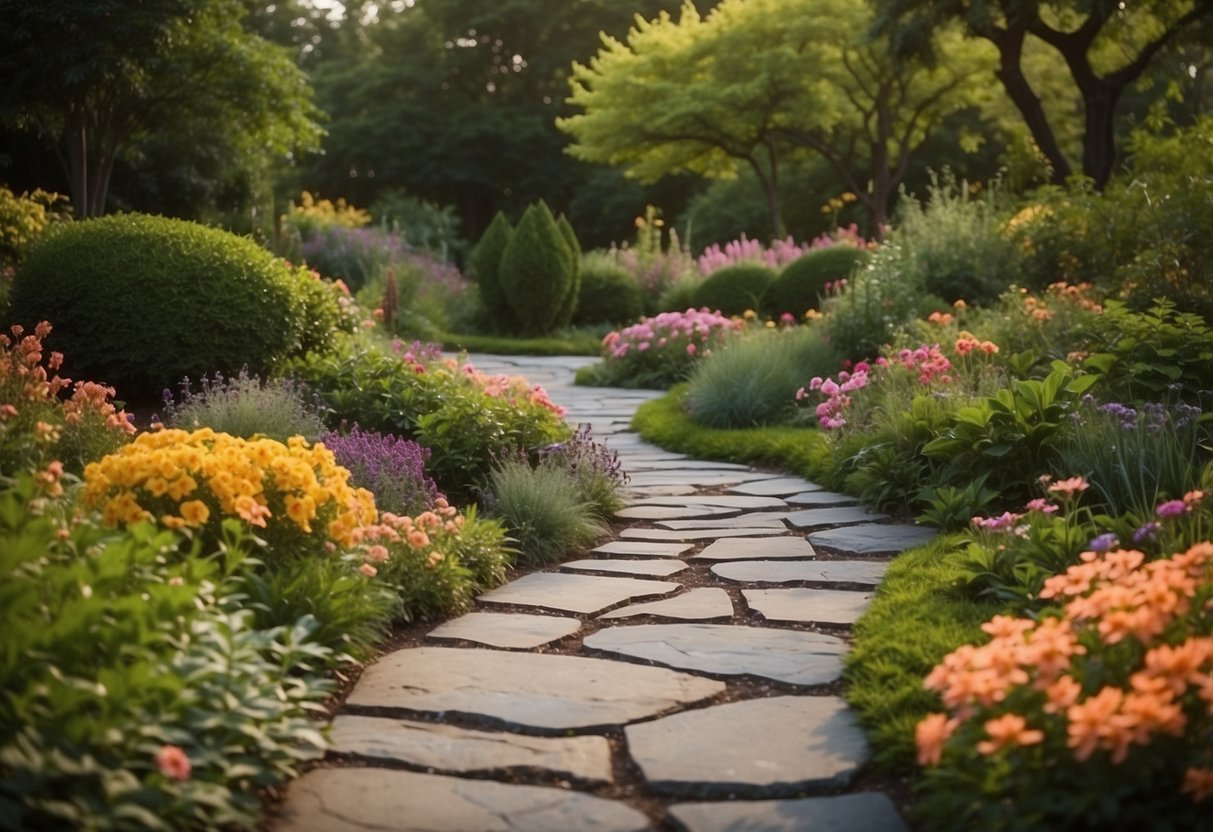
Transform your garden with a flagstone zigzag walk. This design adds visual interest and breaks away from the traditional straight path.
Use mixed sizes of flagstones to create a unique and charming zigzag pattern. Fill the gaps with pebbles or grass to enhance the natural look.
A flagstone zigzag walk keeps your garden engaging and playful, perfect for any outdoor space.
4) Paver Garden Path

A paver garden path can add a sleek and modern touch to your garden. Using materials like brick, stone, or concrete, you can create patterns that are both durable and attractive.
Pavers are easy to install. You can lay them in straight lines or create more intricate curved designs. This versatility makes them a popular choice for many homeowners.
For a unique look, mix and match different paver colors or textures. This adds visual interest and can complement the plants and features in your garden. Check out these ideas to get inspired!
5) Gravel Spiral Route
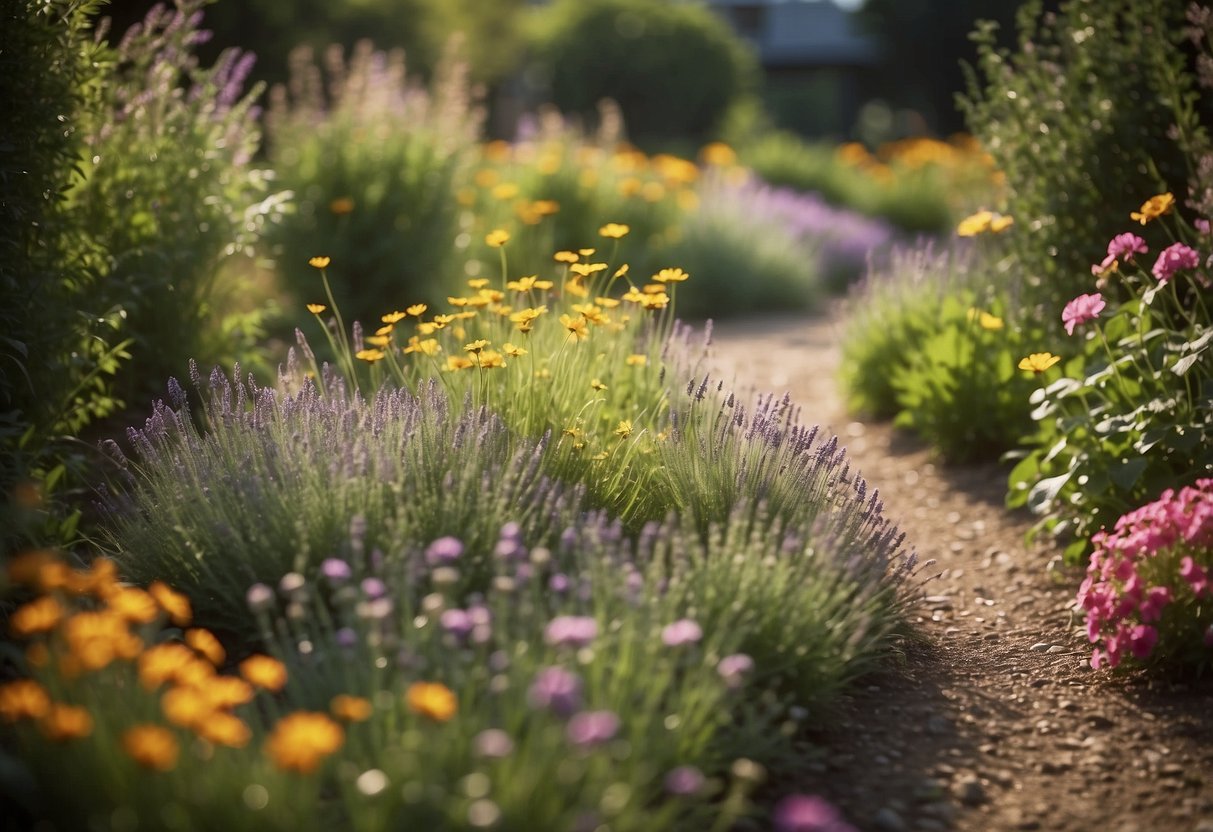
A gravel spiral route adds a touch of whimsy and elegance to your garden. The spiral design can make even a small garden feel like a hidden gem.
To create this path, use fine gravel that is easy to walk on. Lay out the spiral using string or a garden hose to guide you.
Surround the gravel route with lush greenery or colorful flowers for a striking contrast. This design can transform your garden into a peaceful retreat. For more ideas on garden path designs, visit Ideal Home’s garden path ideas.
6) Wooden Boardwalk Loop

A wooden boardwalk loop can add charm and functionality to your garden. It’s a great option if you want a natural look.
Using pressure-treated wood or composite boards ensures durability. You can create a seamless loop that blends well with your garden’s scenery.
Adding curves to the boardwalk makes the path more interesting and inviting, enhancing the garden’s overall beauty. For more inspiring ideas, check out these wooden garden walkways.
7) Cobblestone Archway
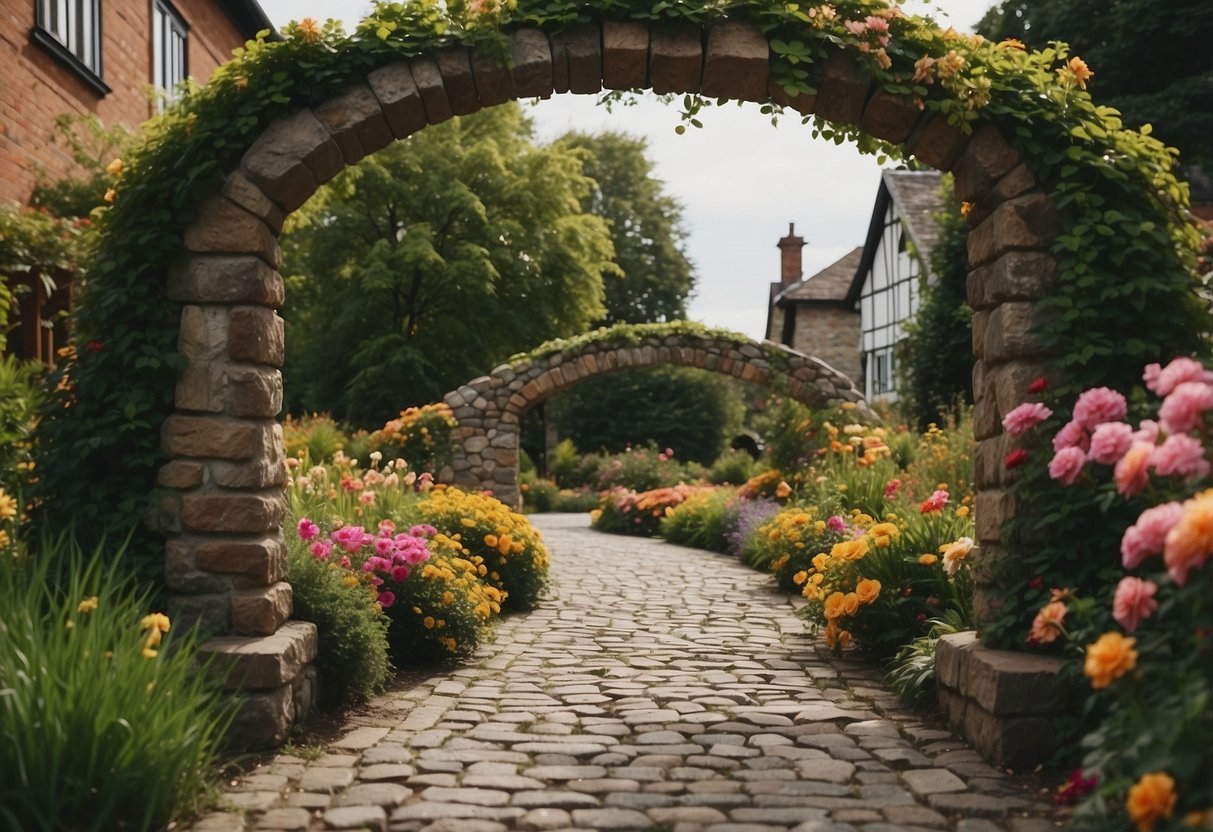
A cobblestone archway can add a timeless charm to your garden.
You can create beautiful patterns using square and rectangular cobbles for a classic look.
Consider a European fan pattern to give your pathway some elegance.
Widen parts of the path to make circles for added interest.
8) Stepping Stone Twist
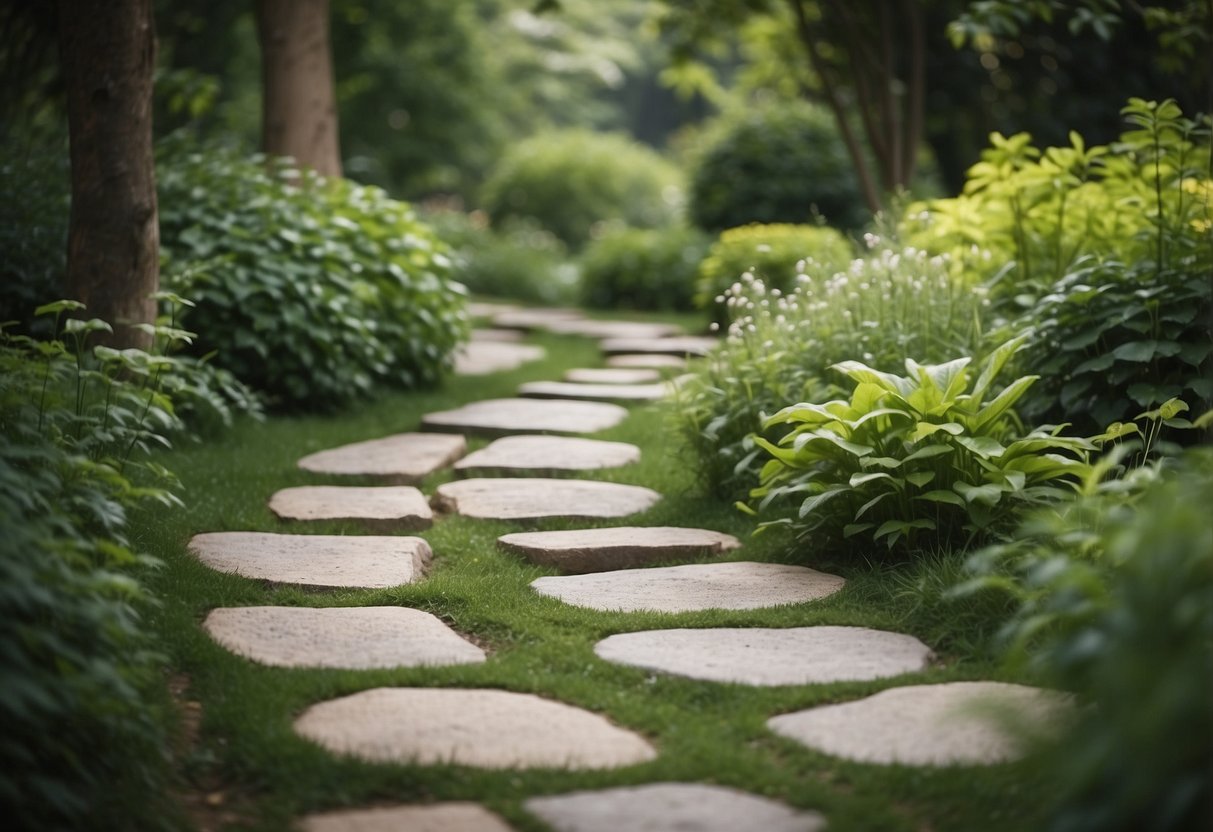
A stepping stone twist gives your garden path a unique look. Instead of placing stones in a straight line, arrange them in a gentle curve. This creates a sense of movement and flow.
Choose stones of different shapes and sizes. This adds variety and interest to the path. You can use round, square, or irregularly shaped stones.
Add plants along the edges. This softens the look and blends the path with the garden. Consider using low-growing plants like moss or small flowers. For more ideas, check out this guide.
9) Bamboo Forest Trail

Imagine walking through a serene bamboo forest in your own backyard. A bamboo pathway can add a unique, tranquil touch. Use tall bamboo plants on either side to create a natural tunnel.
Choose stone or gravel for the path. These materials complement the earthy look and feel of bamboo. Keep the path slightly curved for a whimsical, enchanting route.
10) Pebble Scallop Path
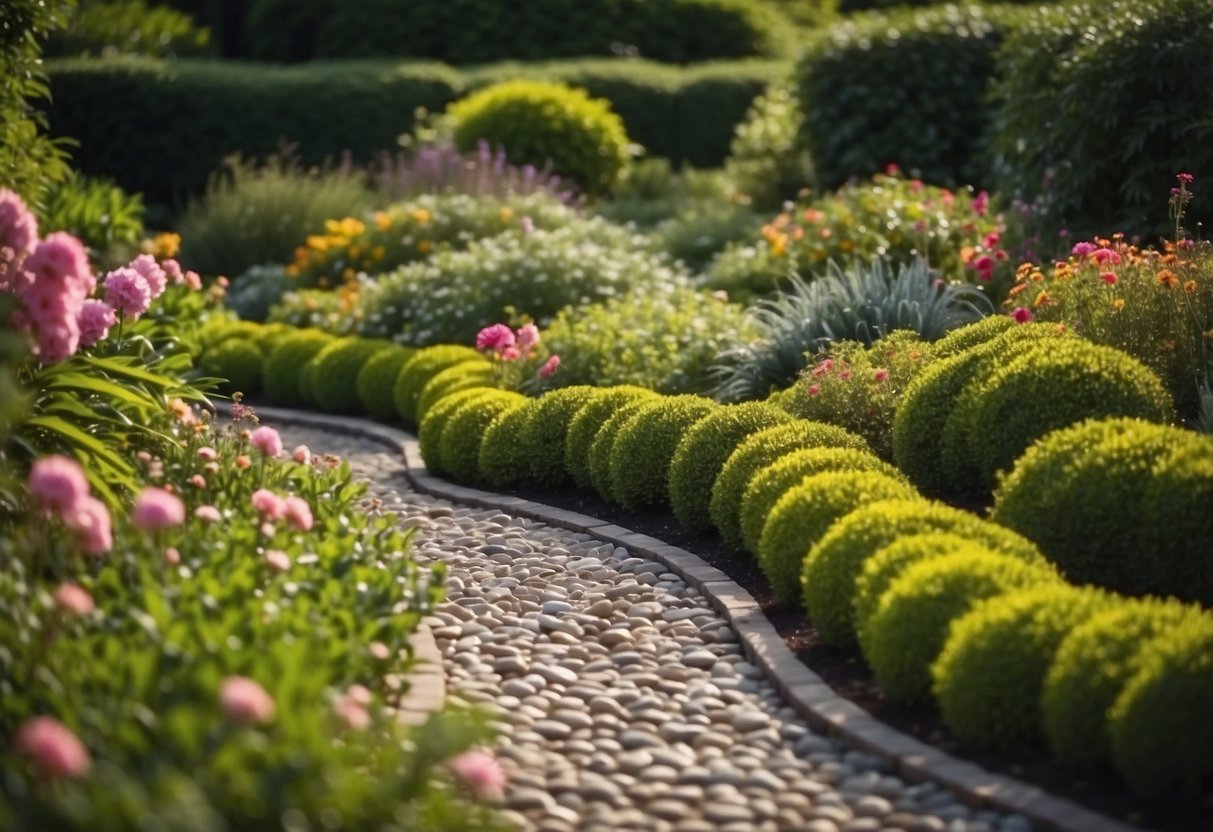
A pebble scallop path brings a unique and eye-catching look to your garden.
You can create a scallop pattern using different colored pebbles. Mix light and dark tones for contrast that’s visually appealing.
Use concrete borders to keep the pattern intact and your pebbles in place. A scallop path is both artistic and functional for your garden.
Benefits of Curved Garden Paths

Curved garden paths offer a range of advantages that enhance your garden’s appearance, create a smoother flow, and blend seamlessly with the natural environment.
Enhanced Aesthetics
Curved paths add a sense of elegance and charm to your garden. The gentle arcs can make the space seem more inviting and visually interesting. Unlike straight paths, which can be rigid and formal, curved pathways introduce a softer look.
You can use various materials like gravel, stones, or bricks to match your garden’s theme. A well-designed curved path can also highlight garden features, such as flower beds, sculptures, or water elements, making them stand out beautifully.
Increased Flow and Movement
A curved garden path naturally guides you through the space, allowing you to experience different parts of the garden more fluidly. The winding design slows down your pace, encouraging you to enjoy your surroundings more fully.
This is especially beneficial in larger gardens, where a meandering pathway can effectively manage the flow of foot traffic. It can also create a sense of discovery, leading you to new areas of the garden without a strictly defined route.
Better Integration with Nature
Curved paths can blend more harmoniously with the natural landscape. They follow the contours of the land, making them less intrusive. This can be especially useful in gardens with varied terrain, where a straight path might be impractical.
Using natural materials like wood chips or stones for your pathways can further enhance this integration. A curved layout offers flexibility in design, allowing you to weave around trees and shrubs, preserving the garden’s natural beauty.
Designing Your Curved Garden Path
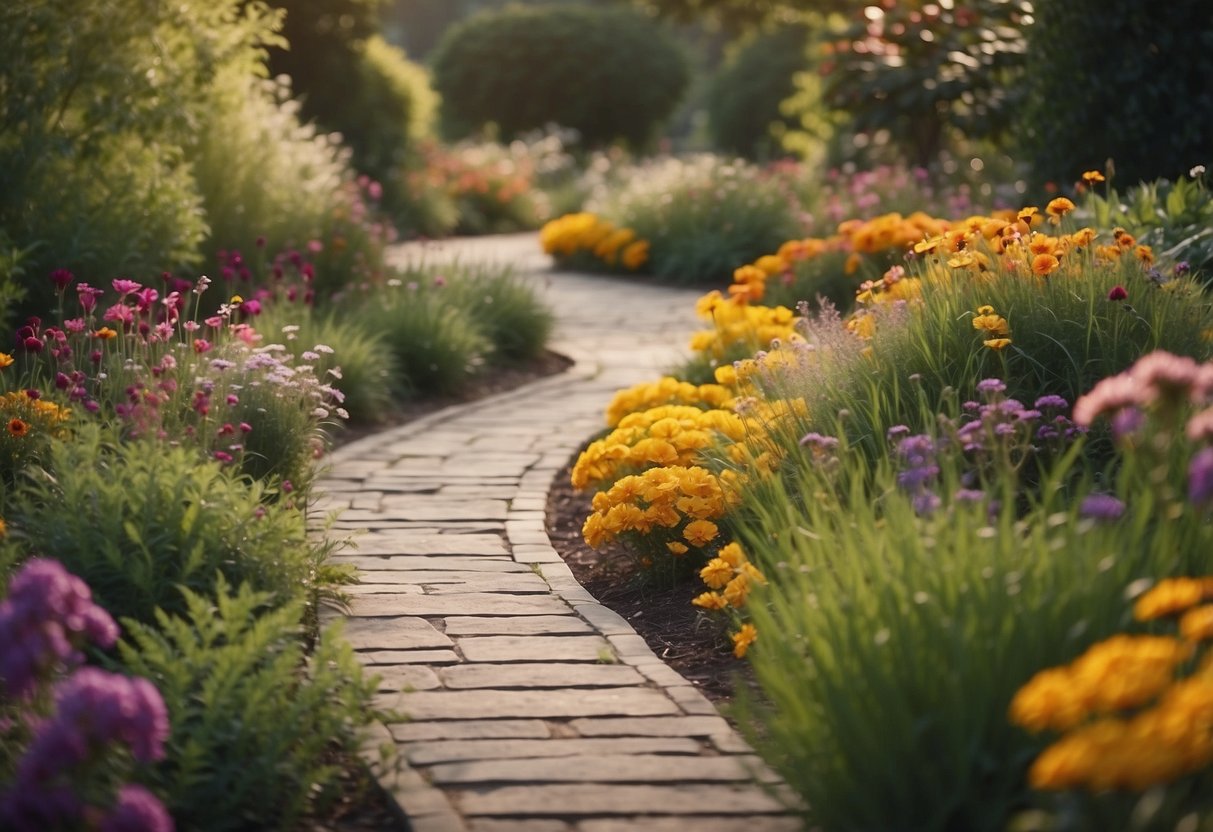
Creating a curved garden path involves selecting the best materials for durability and aesthetics, and ensuring the path is wide enough for comfortable use.
Choosing the Right Materials
When picking materials for your curved garden path, think about durability, appearance, and ease of maintenance. Popular choices include bricks, gravel, stone, and wood.
- Bricks: These provide a classic look. They are durable and work well for curves.
- Gravel: Gravel paths are easy to install and flexible. They suit a more natural garden theme.
- Stone: Stone paths offer a rustic feel. Choose flat stones for a smooth walk.
- Wood: Ideal for modern gardens. Use treated wood to prevent rot and decay.
Combine materials for a unique path. For example, mix wooden slats with white gravel for a striking, modern design.
Calculating the Path Width
The width of your path affects its functionality. For comfortable walking, aim for a path that’s at least 3 feet wide. If you plan to use a wheelbarrow or allow two people to walk side-by-side, a width of 4 to 5 feet is better.
For main paths, stick to these widths:
- 3-4 feet for narrow spaces.
- 4-5 feet for broader areas.
Use a tape measure to map out your path before laying materials. Adjust the width according to the space and usage needs. This ensures your path is both practical and visually appealing.
Maintenance Tips for Curved Garden Paths

Maintaining curved garden paths involves regular tasks like controlling weeds and repairing damaged sections to keep them looking their best. By being consistent with these tasks, your garden path will remain attractive and functional.
Weed Control
Weeds can quickly make a path look untidy and can even damage the structure. To manage weeds, you’ll want to regularly inspect your curved path. Pull out any weeds by hand or use a garden hoe.
Applying pre-emergent herbicides can prevent weed seeds from germinating. Place a thick layer of mulch or gravel on the path to add extra protection against weeds.
Edges are particularly prone to weed growth. Install edging materials like bricks or metal strips to keep weeds at bay. This simple step can make future maintenance much easier.
Repairing Damaged Sections
Over time, wear and tear can damage the path. Regularly check for cracks or loose stones, especially after harsh weather. For stone or brick paths, replace any damaged stones or bricks promptly to avoid further deterioration.
Curved paths made with wood might need more attention. Inspect for rot or warping and replace any damaged wooden slats.
For gravel paths, you’ll need to rake the surface to redistribute the gravel evenly and fill in any low spots that develop. Adding fresh gravel occasionally can keep the path level and attractive.
Each type of material will have its specific requirements, but addressing issues as they arise will ensure your path remains in top condition.







